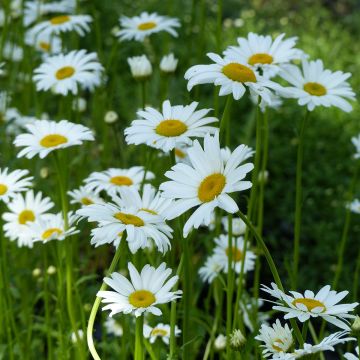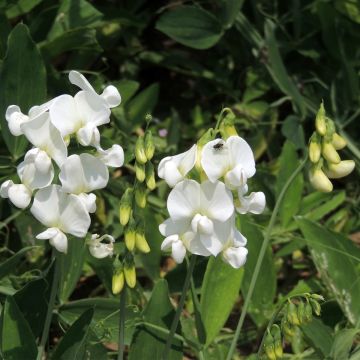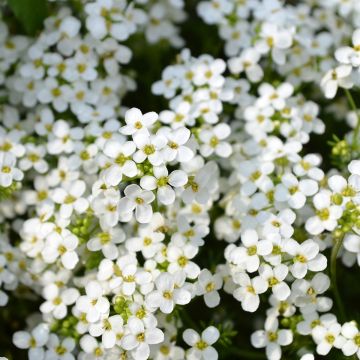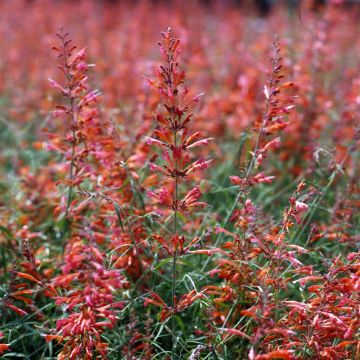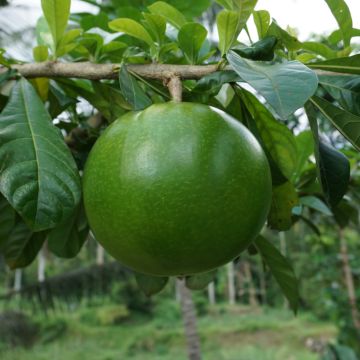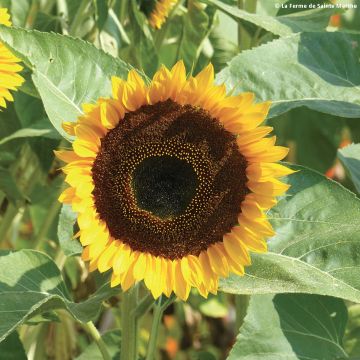Shipping country and language
Your country of residence may be:
Your country of residence is:
For a better user experience on our website, you can select:
Your shipping country:
Andorra
Austria
Belgium
Bulgaria
Canada
Chile
Croatia
Cyprus
Czechia
Denmark
Estonia
Finland
France
Germany
Greece
Hungary
Iceland
Ireland
Italy
Latvia
Lithuania
Luxembourg
Malta
Monaco
Netherlands
Poland
Portugal
Romania
Slovakia
Slovenia
Spain
Sweden
Switzerland
United Kingdom
We only deliver seed and bulb products to your country. If you add other products to your basket, they cannot be shipped.
Language:
French
German
Spanish
English
My Account
Hello
My wish lists
Plantfit
Log in / Register
Existing customer?
New customer?
Create an account to track your orders, access our customer service and, if you wish, make the most of our upcoming offers.
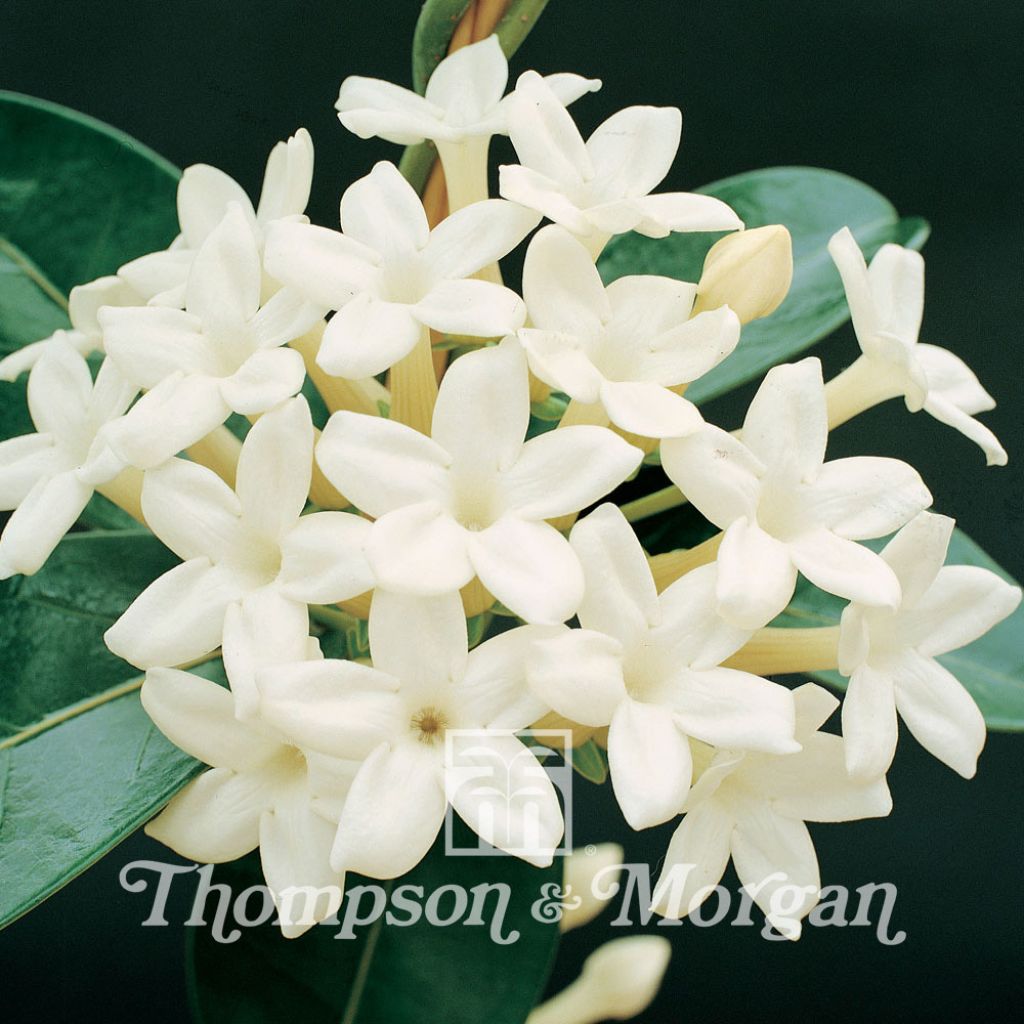

Stephanotis Floribunda
Stephanotis floribunda - seeds
Stephanotis floribunda
Madagascar Jasmine, Waxflower, Hawaiian Wedding Flower, Bridal Wreath
From stéphanotis seeds, I managed to grow a plant. I wonder when it will bloom again?
Liliane, 28/08/2020
Why not try an alternative variety in stock?
View all →Order in the next for dispatch today!
Dispatch by letter from €3.90.
Delivery charge from €5.90 Oversize package delivery charge from €6.90.
More information
This item is not available in your country.
Schedule delivery date,
and select date in basket
This plant carries a 6 months recovery warranty
More information
We guarantee the quality of our plants for a full growing cycle, and will replace at our expense any plant that fails to recover under normal climatic and planting conditions.
Seed-only orders are dispatched by sealed envelope. The delivery charge for seed-only orders is €3.90.
Does this plant fit my garden?
Set up your Plantfit profile →
Description
The Madagascar Jasmine is a perennial plant native to Madagascar where it grows in semi-shaded forests, clinging to tree branches. It needs a warm temperature (18 to 22°C (64.4 to 71.6°F)) and ambient humidity (50%), so it must be grown in a greenhouse or as an indoor plant.
Stephanotis floribunda or Stephanotis jasminoides is a twisting, lightly branched climber, with green and round stems winding around its support to climb higher and higher. It can reach 6m (20ft).
The 8 to 15 cm (3 to 6in) long leaves, are thick, dark green, shiny and oval. They are marked by a slightly lighter large central vein. The leaves are arranged opposite each other on the stem.
From spring to autumn, tubular white flowers with 5 spread-out lobes appear in the axils of the leaves in axillary clusters of 3 to 6. The thick and waxy flowers are highly fragrant with a powerful jasmine scent.
Grow Madagascar Jasmine in a warm greenhouse or indoors. Direct light should be avoided, in a greenhouse it will need to be shaded to prevent the leaves from being "burned". A soil mixture of two-thirds leaf compost and one-third ericaceous compost and bark will suit it perfectly. Water once or twice a week from spring to autumn, without allowing stagnant water in the saucer under the pot. In winter, only water when the soil is dry. Regularly spray the foliage with water to maintain an ambient humidity of around 50%.
Flowering
Foliage
Plant habit
Botanical data
Stephanotis
floribunda
Asclepiadaceae
Madagascar Jasmine, Waxflower, Hawaiian Wedding Flower, Bridal Wreath
Other Thompson and Morgan seeds
Planting and care
Sow Madagascar Jasmine from January to December. Use good quality soil and sift over the surface to ensure the seed makes contact with its substrate. Before sowing, lightly press the soil flat. Broadcast sow your seed then cover by sprinkling soil or vermiculite on top, lightly press and water with a fine rose. Place in the light, without direct sunlight, at a temperature of 18°C (64.4°F) to 25°C (77°F).
The seeds will take 30 to 90 days to germinate. As soon as the plants are manageable, transplant them into 7cm (3in) pots. Keep the soil moist but not wet. Once the plants reach 10cm (4in) high, transplant them to their final pots. A soil mixture of one-third leaf soil, one-third ericaceous compost, and one-third bark will be perfect. Install a support for stems to climb. Since Madagascar Jasmine branches little, you can plant several plants in the same pot, 10-15cm (4-6in) apart.
Water once or twice a week from spring to autumn, without allowing stagnant water in the saucer under the pot. In winter, only water when the soil dries out.
Regularly spray water on the foliage to maintain an ambient humidity of around 50%, this will also prevent attacks from spider mites.
Regularly remove faded flowers.
Sowing period
Intended location
- , onOrder confirmed
Reply from on Promesse de fleurs
Flower seeds
Haven't found what you were looking for?
Hardiness is the lowest winter temperature a plant can endure without suffering serious damage or even dying. However, hardiness is affected by location (a sheltered area, such as a patio), protection (winter cover) and soil type (hardiness is improved by well-drained soil).

Photo Sharing Terms & Conditions
In order to encourage gardeners to interact and share their experiences, Promesse de fleurs offers various media enabling content to be uploaded onto its Site - in particular via the ‘Photo sharing’ module.
The User agrees to refrain from:
- Posting any content that is illegal, prejudicial, insulting, racist, inciteful to hatred, revisionist, contrary to public decency, that infringes on privacy or on the privacy rights of third parties, in particular the publicity rights of persons and goods, intellectual property rights, or the right to privacy.
- Submitting content on behalf of a third party;
- Impersonate the identity of a third party and/or publish any personal information about a third party;
In general, the User undertakes to refrain from any unethical behaviour.
All Content (in particular text, comments, files, images, photos, videos, creative works, etc.), which may be subject to property or intellectual property rights, image or other private rights, shall remain the property of the User, subject to the limited rights granted by the terms of the licence granted by Promesse de fleurs as stated below. Users are at liberty to publish or not to publish such Content on the Site, notably via the ‘Photo Sharing’ facility, and accept that this Content shall be made public and freely accessible, notably on the Internet.
Users further acknowledge, undertake to have ,and guarantee that they hold all necessary rights and permissions to publish such material on the Site, in particular with regard to the legislation in force pertaining to any privacy, property, intellectual property, image, or contractual rights, or rights of any other nature. By publishing such Content on the Site, Users acknowledge accepting full liability as publishers of the Content within the meaning of the law, and grant Promesse de fleurs, free of charge, an inclusive, worldwide licence for the said Content for the entire duration of its publication, including all reproduction, representation, up/downloading, displaying, performing, transmission, and storage rights.
Users also grant permission for their name to be linked to the Content and accept that this link may not always be made available.
By engaging in posting material, Users consent to their Content becoming automatically accessible on the Internet, in particular on other sites and/or blogs and/or web pages of the Promesse de fleurs site, including in particular social pages and the Promesse de fleurs catalogue.
Users may secure the removal of entrusted content free of charge by issuing a simple request via our contact form.
The flowering period indicated on our website applies to countries and regions located in USDA zone 8 (France, the United Kingdom, Ireland, the Netherlands, etc.)
It will vary according to where you live:
- In zones 9 to 10 (Italy, Spain, Greece, etc.), flowering will occur about 2 to 4 weeks earlier.
- In zones 6 to 7 (Germany, Poland, Slovenia, and lower mountainous regions), flowering will be delayed by 2 to 3 weeks.
- In zone 5 (Central Europe, Scandinavia), blooming will be delayed by 3 to 5 weeks.
In temperate climates, pruning of spring-flowering shrubs (forsythia, spireas, etc.) should be done just after flowering.
Pruning of summer-flowering shrubs (Indian Lilac, Perovskia, etc.) can be done in winter or spring.
In cold regions as well as with frost-sensitive plants, avoid pruning too early when severe frosts may still occur.
The planting period indicated on our website applies to countries and regions located in USDA zone 8 (France, United Kingdom, Ireland, Netherlands).
It will vary according to where you live:
- In Mediterranean zones (Marseille, Madrid, Milan, etc.), autumn and winter are the best planting periods.
- In continental zones (Strasbourg, Munich, Vienna, etc.), delay planting by 2 to 3 weeks in spring and bring it forward by 2 to 4 weeks in autumn.
- In mountainous regions (the Alps, Pyrenees, Carpathians, etc.), it is best to plant in late spring (May-June) or late summer (August-September).
The harvesting period indicated on our website applies to countries and regions in USDA zone 8 (France, England, Ireland, the Netherlands).
In colder areas (Scandinavia, Poland, Austria...) fruit and vegetable harvests are likely to be delayed by 3-4 weeks.
In warmer areas (Italy, Spain, Greece, etc.), harvesting will probably take place earlier, depending on weather conditions.
The sowing periods indicated on our website apply to countries and regions within USDA Zone 8 (France, UK, Ireland, Netherlands).
In colder areas (Scandinavia, Poland, Austria...), delay any outdoor sowing by 3-4 weeks, or sow under glass.
In warmer climes (Italy, Spain, Greece, etc.), bring outdoor sowing forward by a few weeks.



